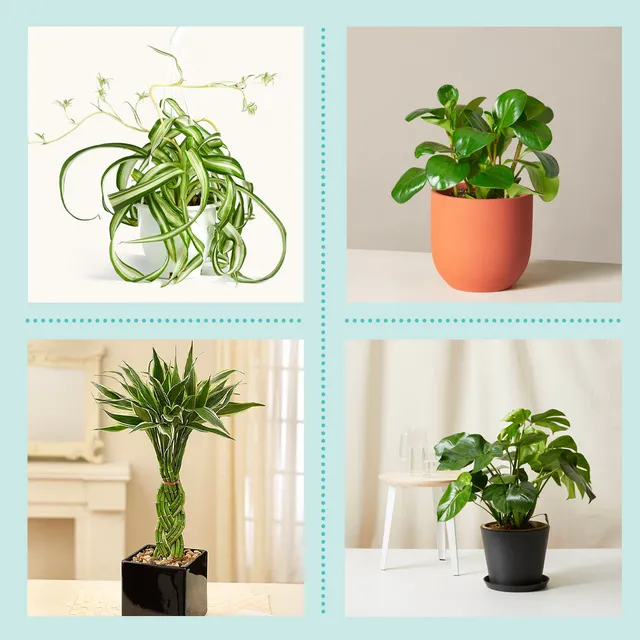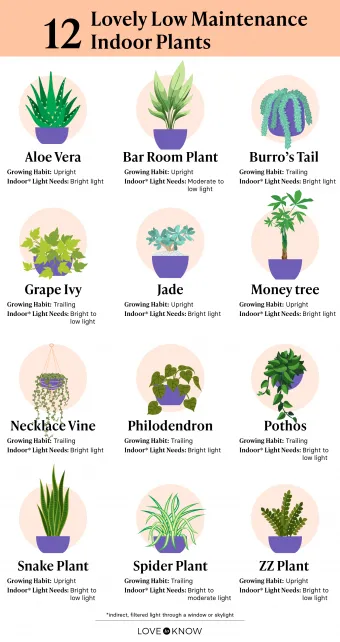The Ultimate Guide to Picking Low-Maintenance Hanging Plants
If you love having greenery indoors but don’t have a lot of time for plant care, hanging plants are the way to go. Their upright structure allows you to use vertical space efficiently. Plus, many hanging basket varieties are very forgiving of neglect. In this article, I’ll cover everything you need to know to select easy care hanging plants that will survive and thrive with minimal attentness from you.
What Makes a Plant “Low Maintenance”?
When it comes to hanging plants, several key traits indicate whether a variety will be easy to care for or not:
- Watering Needs – Look for plants that can tolerate drying out between waterings. Occasional drought is not a death sentence for all.
- Light Tolerance – Choose those suited to low or medium indoor light to avoid perpetual struggle.
- Fertilizer Requirements – Less frequent or no fertilizing makes a plant lower maintenance.
- Pruning/Trimming – Plants that fill out a basket densely and don’t require constant shearing are convenient.
- Pest and Disease Resistance – Resilient varieties better withstand neglect without harm.
With a bit of research, you can assemble a collection ideally matched to your preferred level of plant care involvement.

Top Picks for Easy Hanging Baskets
Based on years of growing a variety of basket plants, here are some top recommendations for carefree hanging greenery:
Pothos
Golden pothos is the queen of low-maintenance houseplants. With heart-shaped leaves in varied color patterns, it’s a classic for a reason. Pothos are practically indestructible – they’ll grow happily in very low light with infrequent watering and no fertilizer. Even if you forget them for weeks, pothos will bounce right back. Their flexible vines also grow long, ideal for spilling over the edges of containers.
Spider Plant
With straplike green leaves and cute spiderettes ready to sprout plantlets, spider plants are great for beginners. They tolerate neglect well and thrive in average home light. Water them when the soil is dry to the touch. Prune off spent flower stalks for continued new growth. Spider plants multiply of their own accord too, allowing propagation of extras as gifts.

English Ivy
This clinging evergreen vine looks lush spilling out of hanging baskets. Give it a spot with partial sun and let the soil dry between waterings. English ivy grows very slowly, so it remains dense and full without shearing. It’s also poisonous to pets if ingested, so place it high up if owning furry friends. Overall, this classic is low effort for a beautiful hanging accent.
String of Hearts
With its pea-sized green and white variegated beads, string of hearts dangling in a pot adds visual depth and motion. This trailing succulent stores water in its wiry stems and plump strands, allowing it to get by with infrequent shallow drinks. Place it where it gets some sunshine through a window and otherwise ignore it! String of hearts is one of those rare combinations of striking looks and utter hardiness.
Wandering Jew
Also called inchplant or purple heart, wandering Jew enjoys average indoor conditions with a southwest window exposure. Water only when its reddish stems begin to look limp. Trim off leggy sections to encourage branching. Wandering Jew spreads its tradescantia beauty with minimal assistance. Its colorful foliage blends harmoniously in mixed baskets too.

Best Practices for Low-Effort Plant Care
While the above varieties are very forgiving, some general tips will help ensure your hanging plants’ good health:
- Water deeply, then allow soil to dry. Frequent shallow waterings lead to root rot; less frequent deep drinks are preferred.
- Pick the right spot. Hanging plants still need adequate humidity and light appropriate to their requirements.
- Repot periodically into well-draining soil. Over time, soil compacts, reducing drainage and aeration for roots.
- Prune off diseased parts. Remove any yellow or limp foliage to redirect energy into new growth.
- Dust leaves monthly. A soft cloth removes accumulated residue that can block sunlight absorption.
- Rotate pots weekly. This prevents uneven growth due to directional light imbalance.
- Fertilize in spring and summer only. Most hanging plants need minimal or no added nutrients indoors.
With gorgeous forgiving varieties found at garden centers and big box stores year-round, anyone can decorate with live hanging plants. Following these basic tips will keep them looking their best with as little work as possible on your part.
Hope this guide to easy care hanging plants helps you pick some winners to brighten your home with low-maintenance greenery. Feel free to experiment to find your favorites – not every variety works for every space or lazy gardener!

Let me know if you need any other plant care advice. Wishing you success in growing a low-fuss hanging garden of your own.
Top Low-Maintenance Hanging Plants
| Plant | Water Needs | Light Needs | Care Tips |
|---|---|---|---|
| Pothos | Allow soil to dry out between waterings | Low to medium light | Trim vines to encourage new growth |
| Philodendron | Water when top inch of soil is dry | Low to bright indirect light | Repot when roots emerge from drainage holes |
| Spider Plant | Let soil dry between waterings | Bright indirect light | Propagate shoots to fill out container |
| English Ivy | Water when top inch of soil is dry | Low to bright indirect light | Prune to maintain shape and control growth |
| Chinese Evergreens | Water when top inch of soil is dry | Medium to bright indirect light | Rotate plant for even growth |
FAQ
- What types of hanging plants are easiest to care for?
Plants like pothos, spider plants, philodendrons, and English ivy are almost indestructible. They can tolerate low light and don’t need much water. - How often should I water easy care hanging plants?
Most hardy hanging plants only need water when the top inch or two of soil is dry. During warmer months, once a week should suffice. Perhaps less often in cooler weather if the plant is inside. - Do they need fertilizer?
While fertilizer isn’t completely necessary, using a diluted liquid houseplant fertilizer every couple months in the growing season can boost their growth. Too much fertilizer risks burning their roots. - Where is the best place to hang plants?
Near a bright, indirect window is ideal. Direct hot sun could scorch their leaves. However, some plants like philodendrons thrive in low light, possibly underneath furniture or cabinets. - How do I know if a plant is getting too much or too little light?
Too much light may cause leaf burn. Too little and leaves appear lank or pale. Experiment to find just right balance. It’s amazing how adaptable plants can be! - What if a leaf gets damaged?
Usually it’s nothing to stress over. Simply prune off brown or mushy parts with clean scissors. The plant may even sprout new growth from that spot. On the other hand, watch for pests that could spread. - What if a plant gets really tall over time?
You can pinch or cut back long vines or stems to encourage bushier growth. Some experts say this mimics their natural pruning in trees. Maybe give it a try and see if the plant appears healthier in the end!
